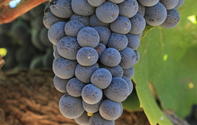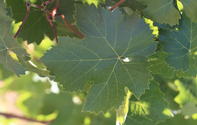Description
Gamay noir is a black wine grape variety traditionally used for the production of easy drinking red table wines. It developed from a cross between Pinot noir and the ancients variety, Gouais blanc.Origins
Gamay noir is an old variety from Burgundy that was banned by Philip the Bold, the duke of Burgundy, in 1395 because he feared it might damage the region’s reputation for making great wines, especially from Pinot noir. Farmers in the region had been planting more and more Gamay noir at the expense of Pinot noir, because the former produced higher yields and were easier to grow.
The ban succeeded in saving the regions reputation, but caused poverty to worsen. Farmers in the Beaujolais region, in the south of Burgundy, managed to escape the duke’s notice and continued to produce Gamay noir. The variety turned out to be well-suited to the region, resulting in it being the main red variety produced in Beaujolais from the 17th Century.
The variety gained popularity outside the region in the 1980s, with producers basically putting the wines on the shelve almost a day after it was harvested. Since then, the popularity of the variety has dwindled, but producers has responded by creating more sophisticated Gamay noir wines.
Other Names
The French use the synonyms Gamay noir à jus blanc to distinguish it from other Gamai varieties.Production in South Africa
The variety has lost ground to Cinsaut noir, because it is more reliable and produces higher yields.Production Regions
The area under Gamay noir in South Africa has dropped below 10 ha in 2016. Almost all these plantings are located in Stellenbosch.Growth and Ripening
The vine is moderately vigorous. New clones are relatively fertile, with a yields averaging between 12 t/ha to 15 t/ha. Grapes ripen early mid-season, from the first half of February.
Berries and Leaves
Berries are small, round and have a purple bluish colour. Leaves are medium sized, round, primarily three lobed and have a bright green colour.

